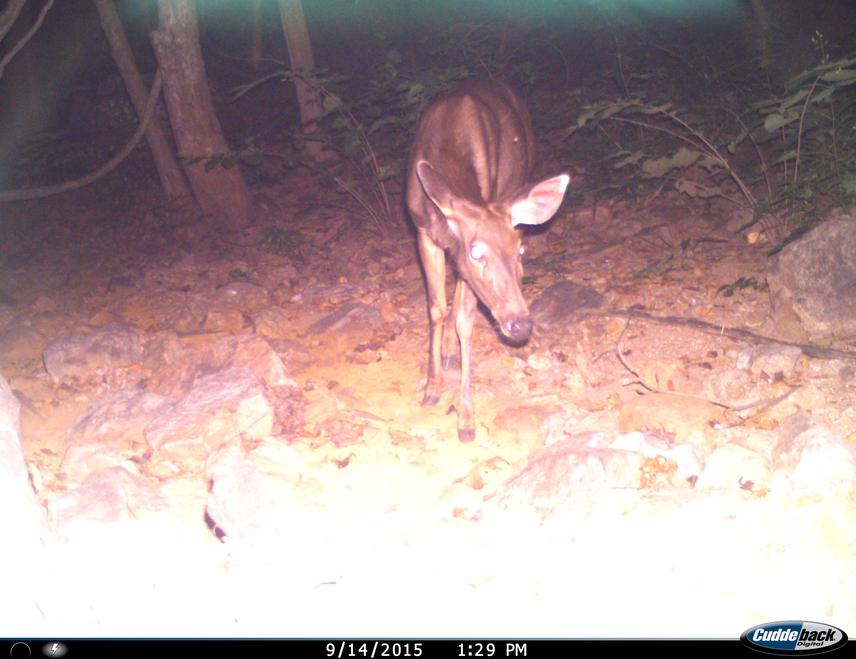Vikram Aditya
Other projects
24 May 2023
Building Multi-Stakeholder Engagement for Mitigating Hunting and Wildlife Trade in India's Northern Eastern Ghats, Focusing on the Indian Pangolin
This project aims to 2) assess impacts of hunting and trade on wildlife in the northern Eastern Ghats (NEG) landscape in the Andhra Pradesh state of southern India, focusing on the Indian pangolin, and 1) assess distribution of pangolins in the NEG. The project will generate field data on occurrence and distribution of the pangolin in the NEG, what drives hunting and wildlife trade and how it impacts pangolins.

Sambar.
The Indian pangolin Manis crassicaudata has witnessed a rapid decline and is currently listed as Endangered by the IUCN. Pangolins are the most heavily trafficked mammals globally. Although pangolins historically were widely distributed across much of India, albeit occurring at low densities, their populations have significantly declined across India and they are very rare now. Pangolins are still widely hunted for their meat and targeted for their scales in illegal trade, and this is threatening their survival. Few studies on their occurrence and ecology exist. The northern Eastern Ghats (NEG) landscape of India has extensive forest cover dominated by tropical dry and moist deciduous forests, habitats preferred by the Indian pangolins, as well as with patches of semi-evergreen forests in the higher elevations. Although largely neglected, recent surveys have reported several rare, endemic and endangered species from this landscape throwing light on its biodiversity and conservation value. However, the landscape is under immense pressure and only one large PA, the Papikonda National Park, exists.
This project aims to study the impacts of hunting pressure and trade on wildlife, and specifically its impacts on the presence, distribution and population status of the Indian Pangolin in the northern Eastern Ghats hill landscape of Andhra Pradesh state in southern India. The project will generate primary field data on the occurrence and distribution of the Indian pangolin in the NEG landscape and identify its habitat preferences. It will assess the extent of hunting and trade in wildlife focusing on the pangolin and identify its drivers. We aim to come-up with village level awareness activities and community initiatives to mitigate hunting and wildlife trade particularly targeted at the Indian pangolin and will contribute to its conservation. This project will also provide capacity building opportunities for young researchers from the region.